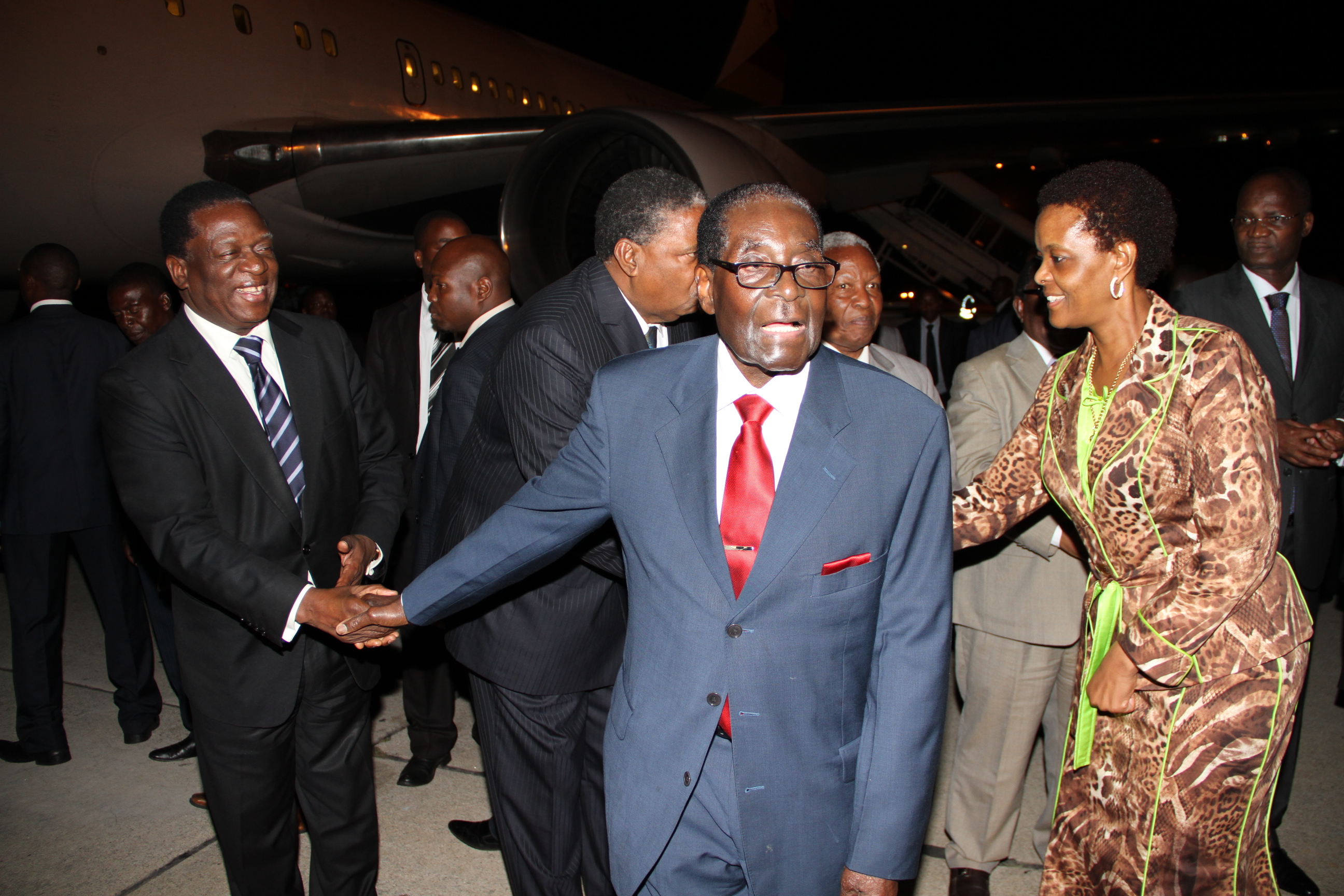President leaves for Indonesia


President Mugabe and the First Lady Amai Grace Mugabe bid farewell to Vice Presidents Emmerson Mnangagwa and Phelekezela Mphoko, Defence Minister Sydney Sekeramayi, Economic Planning and Investment Promotion Minister Simon Khaya Moyo, Information, Media and Broadcasting Services Minister Professor Jonathan Moyo and other Government officials at the Harare International Airport yesterday before their departure for Indonesia. — (Picture by Innocent Makawa)
Caesar Zvayi Editor—
President Mugabe left Harare last night for Jakarta, Indonesia where he joins other world leaders for the Asia-Africa Summit that coincides with celebrations of the 60th anniversary of the historic Bandung conference that laid the groundwork for the Non-Aligned Movement. The President was accompanied by First Lady Amai Grace Mugabe and other Government officials.
In April 1955, representatives from 29 governments drawn from Asia and Africa gathered in Bandung, Indonesia to deliberate on peace and the role of the developing world in the Cold War, economic development and decolonisation.

President Mugabe and the First Lady Amai Grace Mugabe bid farewell to Vice Presidents Emmerson Mnangagwa and Phelekezela Mphoko, Defence Minister Sydney Sekeramayi, Economic Planning and Investment Promotion Minister Simon Khaya Moyo, and other Government officials at the Harare International Airport yesterday before their departure for Indonesia. — (Picture by Innocent Makawa)
The core principles of the Bandung Conference were political self-determination, mutual respect for sovereignty, non-aggression, non-interference in internal affairs and equality of nations.
These principles were integral for all participants, most of whom had just emerged from colonial rule where many of their people were treated as second class citizens in their own polities.
The governments of Burma, India, Indonesia, Pakistan and Sri Lanka co-sponsored the Bandung Conference, and they brought together an additional 24 nations from Asia, Africa and the Middle East.
The Non-Aligned Movement has, however, struggled to remain relevant in the increasingly uni-polar, post-Cold War era as member States forged new alliances and gained economic clout.
Today, Asia and Africa are home to some of the world’s fastest-growing growing economies.
Of the world’s estimated 7,1 billion people, Africa and Asia are home to 5,4 billion or 76 percent of the world population, with the other four regions Europe, North and South America, as well as Oceania contributing the other two billion. As such, a gathering of Asia and Africa, in population terms, is akin to a gathering of the world and given the resources that repose in these continents and growth rates of these continents may soon mean the same even in geo-political terms.
Foreign direct investment and trade have increased tremendously between the continents, growing from $2,8 billion in 1990 to $270 billion by 2012.
And officials say the countries in both regions want to take a greater role in setting global development agendas.
As such, the conference is geared at promoting South-South co-operation which dovetails with Zimbabwe’s Look East policy adopted by Government at the turn of the millennium, and which has enabled Zimbabwe to survive a 15-year assault by Western countries led by Britain and the United States who wanted to effect illegal regime change to prevent Zimbabwe from taking its independence from the political to the economic dimension.
To this end, Zimbabwe-China trade has since ballooned, reaching $1,1 billion in 2014.
Government recently signed nine multi-billion dollar mega-deals with China to revamp infrastructure in line with its five-year economic blueprint, Zim-Asset, that identifies infrastructure development as a key enabler of economic growth.
As such, the Africa-Asia Summit dovetails with Zimbabwe’s development trajectory and foreign policy.
The conference is expected to draw more than 30 Heads of State and Government among them the leaders of China, Japan, Brunei, and Malaysia.










Comments